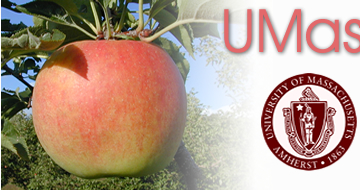

| FRUIT ADVISOR HOME | CONTACT | ABOUT | ||
 |
 |
|
| Consumer Evaluation of New, Antique, and Little Known Apple Varieties | ||
|
|
||
Duane W. Greene and Jon M. Clements Introduction Massachusetts has had a long history of apple production. Due to its favorable climate, it has been a leading producer in the United States of the variety McIntosh, along with Maine, Vermont, and New York. Over the past few years, the dynamics of apple production has changed dramatically due in large part to the rapid expansion of apple production overseas, especially in the southern hemisphere and a logarithmic increase in production in China. While Massachusetts has a climate that favors the production of high quality apples, financial return to growers has declined steadily over the past 20 years. Other geographic locations can produce nearly twice as many apples per acre because of high light conditions, a long growing season, and abundant water. Others areas, most notably China, Brazil, and Chile can produce high yields at much reduced cost because of low wages paid to workers. For these reasons, wholesale production of apples in Massachusetts has declined rapidly, and the number of farms growing apples has been significantly reduced. The most profitable growers of apples today are those who sell directly to the public through roadside stands. Apple production in the United States has been dominated by cultivars such as Delicious, Golden Delicious, and McIntosh for many years. During the past 25 years, there has been a gradual metamorphosis, where new, novel, and different cultivars types are being planted. This change first started first with the successful introduction of Granny Smith from Australia in the early 1980’s. The popularity of the apple showed that nontraditional apples could become commercially successful. Significant plantings of Gala, Fuji, and Braeburn soon followed. In the 1980s and early 1990s, many new apple varieties became available. Consumers enjoyed having new and better tasting varieties available, and growers were attracted to these because of the higher price that consumers were willing to pay for them. Honeycrisp is an example of an apple that not only has become extremely popular, but Massachusetts appears to be a favorable place to grow this apple. |
||
| ©Copyright 2008 University of Massachusetts Amherst. Site policies. Produced and maintained by the UMass Fruit Program. |